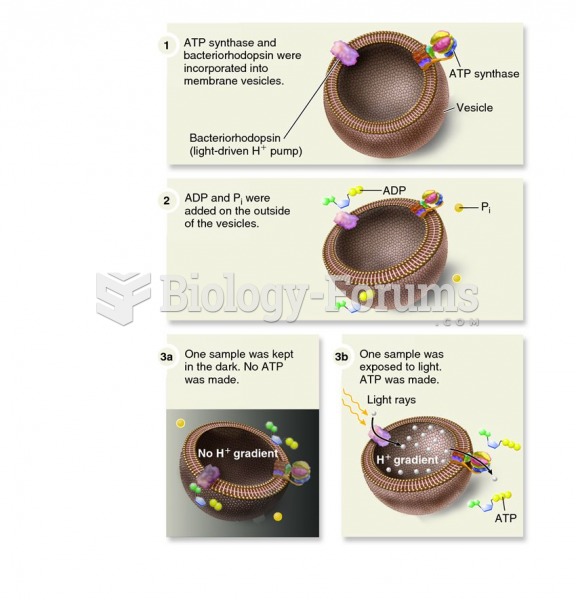|
|
|
On average, the stomach produces 2 L of hydrochloric acid per day.
Elderly adults are at greatest risk of stroke and myocardial infarction and have the most to gain from prophylaxis. Patients ages 60 to 80 years with blood pressures above 160/90 mm Hg should benefit from antihypertensive treatment.
The Centers for Disease Control and Prevention has released reports detailing the deaths of infants (younger than 1 year of age) who died after being given cold and cough medications. This underscores the importance of educating parents that children younger than 2 years of age should never be given over-the-counter cold and cough medications without consulting their physicians.
Amphetamine poisoning can cause intravascular coagulation, circulatory collapse, rhabdomyolysis, ischemic colitis, acute psychosis, hyperthermia, respiratory distress syndrome, and pericarditis.
There are actually 60 minerals, 16 vitamins, 12 essential amino acids, and three essential fatty acids that your body needs every day.
 The Racker and Stoeckenius experiment showing that an H+ electrochemical gradient drives ATP synthes
The Racker and Stoeckenius experiment showing that an H+ electrochemical gradient drives ATP synthes
 Creede, Colorado, circa 1890, a rough silver mining town that grew from 660 people in 1889 to over 1
Creede, Colorado, circa 1890, a rough silver mining town that grew from 660 people in 1889 to over 1
 Many people consider the British statesman Winston Churchill (1874–1965) to be an exemplar of the ...
Many people consider the British statesman Winston Churchill (1874–1965) to be an exemplar of the ...




